Mazda 2 review and buyer's guide
If you’re shopping for a small car like Toyota Yaris, Suzuki Swift or Kia Picanto, the Mazda2 offers excellent value with a swish of stylish comfort against its rivals. So how do you pick your kids’ potential first car?
The Mazda2 is a proper city car that offers minimalist transport that is by far better for the environment and the hip pocket than any SUV you’ll find on sale. And it’s been updated for 2023 onwards.
It’s smaller than the Mazda3, but remains quite a useful little device not just for getting from A to B, but for teaching your teenage kids to drive, keeping them safe as they do so, and for generally low-expenditure running around town to get things done.
Pricing is competitive, but it has increased markedly, ranging from $21,990 driveaway previously for the Pure hatch, to now starting at $26,247 - that’s an increase of 19 per cent. The top-spec GT is now $31,666, up from $27,500 driveaway - that’s 15 per cent up.



Despite this, in wider market context, Mazda2 is still such good value, because it’s still $8000 less than the Mazda 3, seats the same number of people, but only has 18 per cent less luggage space - so it’s not some disproportionate pricing arrangement; in fact it’s quite appropriate. And it’s not like you’re going to need to use the outright performance advantage in the Mazda 3 in any meaningful way.
Mazda should be selling more 2s and when you drive one or even sit inside, it might seem weird they don’t.
2023 full-year light & micro car sales
Actually, it’s fairly simple. It’s because Mazda probably prefers you to buy the slightly bigger, but $8-10k more expensive Mazda3, when most city-based driving would be accommodated by the Mazda2 on all days ending in Y. And there’s now serious competition from the likes of MG3 and the Kia Picanto.
The Mazda2 also applies a value-proposition blowtorch to the posterior of German small cars which sing and dance about being notionally premium, yet stand beside the Mazda2 - with a straight face - asking more of your cash for essentially the same thing - or less.
German ‘prestige’ small cars have increasingly tried to reach into the mainstream brands’ territory, but the Mercedes, Audi and BMW crowd has inherently had problems doing that because of either poor reliability, failing to make a compelling offer or simply trying to treat consumers as if they’re stupid by asking more for less car.
Click here for my ultimate guide on Safe Driving Parts 1 (driving to survive) and Part 2 (skills vs tactics). There’s video if you can’t be bothered reading.
INTERIOR
The cabin of a Mazda 2 is probably the most appealing aspect of the entire vehicle because it does a surprisingly good job with very little space to work with.
Firstly, even in the base ‘Pure’ you get the nice dashboard trim with a textured finish and overall, elsewhere, the rest of the layout is not shabby. There’s still plastics here and there, but it’s not some depressing grey cell in which you might house some of society’s worst.
This is Mazda’s forte - nice interiors that feel good, long-term. Now, keeping in mind you’re in the absolute lowest rung on the Mazda product range ladder, it’s a respectful effort in terms of quality of design and layout.
Sure the seats are cloth, but they are comfortable, and yes, the headroom is limited, but it doesn’t feel torturously cramped.\
Three top-tether points and two outboard ISOFix child restraint positions are available, but don’t be expecting much to go in the centre position of the back seat. You’ll get a narrow booster seat in there between two restraints, best case scenario.
The rear seats get two ISOFix anchor point pairs - just like any small or medium SUV - and the legroom isn’t terrible. There’s no centre fold-down armrest or cupholder for the kids in their restraints, but it is possible for the driver or passenger to pass a stowed drink bottle from the centre console mounted cupholders, into the back seat for the littlies.
Having said that, there’s also no centre console storage cubby with armrest lid.
Not having somewhere to rest your elbow while stopped at the lights is a deficiency, but that’s the compromise with such a small car.
Opting for the sedan will almost double your luggage space over the hatch, giving you 440 litres compared with 250 in the hatchback, and it’s at no additional cost either, which is nice. Plus, you’re only adding 260mm (26cm) to the length, and it’s arguably better looking than the hatch, too.
The sedan puts even the Kia Cerato, Hyundai i30 and Toyota Corolla on notice in terms of bang for your buck because the Mazda 2 is thousands of dollars cheaper and does pretty much the same job.
Don’t expect miracles in terms of legroom or headroom from either the hatch or sedan. Not be overly critical of the Mazda 2, but cabin space is at a premium in this segment, but it’ll get the job done and certainly there is room for adults.
Mazda 2’s wheelbase is only 20mm shorter than a CX-5, just for context, but it’s the orientation of the passengers’ legs compared with the SUV that is the key difference in comfort levels. Short, commuter-type trips will be a breeze, but longer journeys will make for slightly more cramped circumstances with four people and some luggage. You’ll certainly want to be stretching your legs on regional long weekend roadtrips.
SAFETY
It’s easy to be drawn into thinking these tiny cars are unsafe to be driving if involved in a serious crash, and that’s only partly true, but only to a point.
See, less crumple zone and sacrificial parts means less dispersion of kinetic energy over a shorter time frame (in the context of a crash). So if it’s Big Car vs Little Car, the smallest, lightest vehicle won’t fare as well as the big car - that’s just physics.
But it also means inherent lightness in terms of the kinetic energy the Mazda 2 carries and its ability to yaw (corner rotation) as good as or better than any bigger SUV. The lower centre of gravity means less roll in the corners (marginally) and the ability for pedestrians to walk away from an upper leg impact at low speed versus the potential whiplash and spinal damage from the same impact with a bigger, heavier more blunt SUV or ute again makes Mazda 2 worth considering in the context of city-based commuter driving.
Hitting a pedestrian in a Ranger or LandCruiser at 40km/h can absolutely kill that person purely by the nature of the size, height of the bonnet and the energy transfer of that large mass. But a smaller, lighter, lower car at the same speed is a much more survivable prospect for that pedestrian.
According to EuroNCAP, Mazda 2’s pedestrian protection was more than above board in its 2015 testing regime. The report said:
The bumper provided good protection to pedestrian's legs in all areas tested and scored maximum points. Protection provided to the pelvis area was predominantly good.
The surface of the bonnet provided good protection to the head of a struck pedestrian over most of its surface
When it comes to city environments where road conditions are busy, pedestrians are everywhere and reaction time is very short, you would much prefer to be hit by a Mazda 2 than a dual-cab ute or large SUV.
One vehicle you are highly likely to be considering along with the Mazda 2 is the MG 3 - a cheap, seemingly reliable little city car which doesn’t look too bad, on the surface. But there’s something important you need to consider about the MG 3 first, especially in context of the Mazda 2.
The MG 3 does not have a safety rating - it has not been tested by ANCAP or EuroNCAP, or the IIHS in the US - ever. This is a glaring red flag. For such a mass produced car, one that is among the highest selling vehicles in Australia, routinely in the top 10 models in VFACTS monthly sales data, this should raise some questions about its quality and ability to protect you and your kids in a crash.
The updated Mazda 2 is essentially the same fundamental vehicle that was tested by ANCAP in July, 2015, and in those destructive tests, it passed with flying colours. So at least there is actual crash test data to look at, unlike the MG 3 which has been on sale since the start of 2018.
Click to enlarge:
The Mazda 2 has not been tested by the Insurance Institute for Highway Safety (IIHS), but the fact the Mazda2 passed all destructive crash tests by ANCAP back in 2015, that’s information you can go on.
Admittedly, it would be better if it has been tested more recently, but there’s a moderate chance it wouldn’t perform as well, by the nature of more stringent protocols. But that doesn’t default the 2 to some ‘safety shitbox’ designation.
Mazda 2 scored 98 per cent in 2015 testing with ANCAP, and earned a very good 4 star rating from EuroNCAP. According to the latter organisation’s report, the Mazda 2’s passenger compartment:
remained stable in the frontal offset barrier test…
Dummy readings indicated good protection of the knees and femurs of both front seat occupants and Mazda showed that a similar level of protection would be provided to occupants of different sizes and to those sat in different seating positions.
The ANCAP report echoes these findings (because ANCAP shares crash test data between EuroNCAP) and suggests the particularly severe pole test is where Mazda 2’s performance is profound in its ability to protect the occupant. EuroNCAP said:
protection was good and maximum points were scored.
Now obviously under more strict, current-day testing protocols, it’s unknown if the Mazda 2 would pass. Note: That doesn’t mean it wouldn’t: we simply don’t know because those tests haven’t been done.
But with the arrival of a new Mazda 2, based on the also-new Toyota Yaris arriving in Australia in 2024, the new version will certainly be safer and tested under more stringent protocols.
When we’re talking 36.37 out of 37 points in destructive tests, including the frontal offset at 64km/h, the 50km/h side-impact test, and the cringe-inducing 30km/h pole test, that’s damn-near perfect.
Mazda 2 G15 GT comes with a 360 degree camera which none of its rivals can offer, plus front and rear parking sensors and radar cruise control (once you have it, you’ll never want to go back).
Add blind-spot monitoring, lane keeping and departure warning, rear cross-traffic alert, a reversing camera (incl base model), and auto emergency braking in forward and reverse.
There’s six airbags in all the places you expect (front, side and curtain), although there’s no knee airbag - common among its peers.
Just as extra bacon, you also get auto LED headlights and LED running lights, plus satnav which is not always considered a safety feature per se, but at least it removes the temptation to be distracted by a phone.
Base model ‘Pure’ gets standard:
“Smart City Brake Support” (auto emergency braking up to 30km/h) w/ pedestrian detection
Lane-keeping
Apple CarPlay/Android Auto
Blind-spot monitoring
Rear parking sensors
Mazda, being the innovative brand it is today, did not build redundancy into the Mazda2, it invested the R&D into keeping it at bay to the end of the decade.
But right from the get-go, Mazda fully intended to fit the suite of crash-avoidance tech, so they didn’t design something to be fundamentally compromised which would fall behind market expectations in years to come. Unlike, say, Volkswagen or Toyota might. Or Nissan.
Due to the underlying susceptibility of tiny cars to be compromised during a crash, particularly against bigger vehicles (which is what the mobile sled is in today’s frontal crash tests) the value of this 2015 crash test should be proportionately higher to you as a consumer.
And as you look through the other potential options vying for your money, you’ll notice there is no perfect car, because there’s a compromise with each of them. We’re looking at the Mazda2 because it’s likely the best compromise for you. It’s not perfect, but it offers plenty, with minimal drawbacks.
MAIN COMPETITORS
Hyundai Venue Elite ($29,000 driveaway):
Here’s my full Venue buyer’s guide >>
1.6-litre four-cylinder turbocharged petrol engine (90kW @ 6300RPM | 151Nm @ 4850RPM)
Power/weight ratio: 74.8 kW/t
Fuel: 91 RON unleaded, tank: 45L
Transmission: 6-speed automatic
Kerb weight: 1225kg
Servicing: 12 months / 15,000km (whichever occurs first)
Auto emergency braking, forward collision warning, lane keeping assist, driver attention alert
LED daytime running lights, taillights & foglamps + automatic headlights (halogen)
Heated power folding door mirrors
Reversing camera & rear parking sensors
Apple CarPlay/Android Auto
17-inch alloys with space-saver spare wheel; boot space 355 litres (best of the bunch)
Official Venue brochure here >> Download Hyundai Venue spec sheet here >>
Suzuki Swift Sport ($32,000 driveaway):
1.3-litre turbocharged four-cylinder: 103kW (peak power) @ 5500RPM | 230Nm (peak torque) @ 2500-3000RPM
Power/weight ratio: 106.2kW/t
Fuel: 91 RON unleaded, tank: 37L
Transmission: 6-speed auto w/ paddelshift
Kerb weight: 990kg
Servicing: 12 months / 10,000km (whichever occurs first)
Auto emergency braking, lane departure warning & weaving alert (at or above 60km/h), high beam assist, adaptive cruise control - all available on GL Navigator w/ safety pack and GLX Turbo models, minus a couple of grand - plus blind-spot monitoring, 5-star ANCAP safety rating excluding base model GL (tested 2017 >>), rear parking sensors & reversing camera
Tyre repair kit (no spare wheel) - just what you want your kids doing at the roadside, electric power steering w/ rake & reach adjustment, 17-inch alloys, turning circle 9.6m
Cloth seats (manually adjusted), satnav, climate control, CarPlay/Android Auto, LED auto headlights, foglamps
Premium paint: $600-$1000; boot space 242 litres
No driver’s knee airbag; Airbags: driver & passenger front, side curtain front & rear
Swift Sport is getting pretty expensive at $32k compared with its top-spec competition, which puts it in cost contention with the likes of Hyundai i30, Kia Cerato, Toyota Corolla and Mazda 3 - company in which it is completely outclassed on performance, refinement and quality as all-rounded ownership propositions.
Swift Sport is a hoot to drive, I will give it that. Feels like a proper hot hatch when you’re up it for the rent, but at that price, I’d have an i30 or Cerato GT Line with more boot space, better cabin materials, a smoother ride on Australia’s crap roads, and the ability to just settle down and get home with your lower vertebrae intact.
It’s is like those small dogs which think it’s always playtime. Whereas Mazda3, i30 and Cerato can just be comfy, normal cars when the kids are asleep in the back or after your mother-in-law’s hip surgery.
If you’re also considering a small SUV, here’s my thoughts on Suzuki Vitara vs Hyundai Kona >>
Toyota Yaris
The new Yaris has a hybrid powertrain from Corolla in XR mid-spec and ZR top-spec, which should be a pretty good system if the RAV4 and Corolla Hybrid are anything to go by - which they are.
Toyota has its hybrid tech nailed in its current generation of cars, at least so far as I can tell - very little negative feedback on them. The Yaris, like Corolla, will see its battery-motor propulsion favouring suburban and city stop-start driving where fuel consumption is high in order to frequently get its mass moving from a standstill.
Toyota however, doesn’t seem keen on allowing you to drive using the electric powertrain in isolation like the Mitsubishi Outlander PHEV >>, which offers 50-something kays of EV-only mode. That’s pretty good for a two-tonne SUV; you’d be surprised how much you can get done with 50 clicks. Maybe the Yaris will be different - innovative even - although it’s Toyota, so I’ll believe it when I see it.
One significant safety feature here will be intersection collision avoidance, which will stop the car if it detects you or another vehicle crossing trajectories (about to crash). Important if you’re shopping for the kids, grandparents, or for an urban runabout, aka the second car. Or just tell your kids it’ll have CarPlay/Android Auto standard. (Mother/father of the year award goes to…)
Fuel efficiency in the 1.5-litre three-cylinder (with CVT transmission), according to Toyota, will be 15% better, producing 10% more power than the current outgoing model (80kW up to 88kW) and with about 140Nm of torque at around 4400RPM. Or the hybrid option will be 85kW. Current outgoing Yaris servicing is every six months or 10,000kms - this should change to 12 months with the new model.
Pricing will be around mid- $20k - TBC.
VW Polo (80kW Comfortline $26k before on-road costs): $30,000
Strong five-star safety rating (dated 2017 >>), although does not offer lane-keeping assistance features.
Engine:
1.0L petrol three-cylinder: 85kW @ 550RPM & 200Nm @ 2000-3500RPM
Power/weight ratio: 73.8kW/t (worse than Rio, Swift Sport, Venue and Mazda2)
7-speed DSG (dual-clutch) auto or six-speed manual
Fuel: premium 95 RON or higher, tank 40 litres
Kerb weight: 1182kg
Servicing: 12 months / 15,000kms (whichever occurs first); more expensive at every interval than rivals (over $400).
Driver assistance package on Comfortline, Style and GTI versions is $1,500 to add: Adaptive cruise control, blind-spot monitoring, front & rear parking sensors, automated parking (with graphic display), rear cross-traffic alert, and power folding door mirrors with reverse kerb-dipping. Hint: You don’t need automated parking, it’s a first-world problem (which can be easily taught). Airbags: driver & passenger front, curtain front & rear, side first and second row - no driver knee airbag.
Respectable list of standard equipment: Low-speed auto emergency braking (incl pedestrian detection), forward collision warning, driver fatigue monitoring, tyre pressure monitoring, reversing camera, heated power door mirrors.
Full-size 15-inch spare wheel (steel); boot space 351 litres (close second to Hyundai Venue)
No climate control, no satnav, no LED headlights.
Terrible sales volume means poor resale value, long-term.
Mazda2 G15 GT
Features:
Adaptive cruise: Included
Auto-emergency braking: Included
Lane departure/keeping: Included
Rear cross-traffic alert: Included
Reversing camera: Included
Parking sensors (Front/Rear): Included/Included
Blind spot monitoring: Included
360 degree camera: Included
Satnav: Included
Heated front seats: Included
6 speaker sound system
Paddleshift transmission: Included
Premium paint (grey & red): $495
Airbags: 7
LED headlights: Included
Auto high beam: Optional
Tyre pressure monitor: Included
Sunroof: Included
Climate control: Included
Hatch: $27,400 driveaway
1.5L petrol 4-cyl
Power: 82kW @ 6000 rpm
Torque: 144Nm @ 4000 rpm
Economy: 5.3L/100km (combined)
Fuel: 91 RON
Power-to-weight ratio: 78.5 kW/t
Transmission: 6sp auto
Manufactured: Thailand
Length: 4065 mm
Wheelbase: 2570 mm
Height: 1435 mm
Kerb weight: 1070 kg
Fuel tank: 44L
Boot: 250L (hatch) / 440L (sedan)
Seats: Five
Turning circle: 9.8m
Warranty: 5 years / unlimited km
Servicing: 12 months or 10,000 km
Roadside assist: 5 years
Spare wheel: Space-saver
Audi A1 S/back 30 TFSI S-tronic Plus
Features:
Adaptive cruise: Unavailable
Auto-emergency braking: Included
Lane departure/keeping: Included
Rear cross-traffic alert: Unavailable
Reversing camera: Included
Parking sensors (Front/Rear): Optional
Blind spot monitoring: Unavailable
360 degree camera: Optional
Satnav: Optional
Heated front seats: Optional
6 speaker sound system
Paddleshift transmission: Unavailable
Premium paint: $990-$1880
Airbags: 7
LED headlights: Optional
Auto high beam: Optional
Tyre pressure monitor: Included
Sunroof: Optional $1990
Climate control: Unavailable
Hatch: $39,000 driveaway
1.0L 3-cyl turbo petrol
Power: 85 kW @ 5000 rpm
Torque: 200 Nm @ 2000 rpm
Economy: 5.4L/100km (combined)
Fuel: 95RON Premium
Power-to-weight ratio: 68.8 kW/t
Transmission: 7sp dual-clutch
Manufactured: Spain
Length: 4029 mm
Wheelbase: 2563 mm
Height: 1409 mm
Kerb weight: 1200 kg
Fuel tank: 40L
Boot: 335L (hatch only)
Seats: Five
Turning circle: 10.5m
Warranty: 5 years / unlimited km
Servicing: 12 months or 15,000 km
Roadside assist: 3 years
Spare wheel: Space-saver
So much for ‘premium status’. There are so many cosmetic options you can stick onto your poverty pack prestige German micro hatch, but safety and luxury equipment found on the more affordable Mazda is either commanding a $10k premium with the A1 base model shitbox. And the A1 has a worse power/weight ratio despite having more power and less equipment than the Thai-build Mazda2.
So, just to recap: A) you get less stuff in the Audi; and B) It doesn’t go a well as the Mazda.
PRO
Perky engine: enough grunt without having to rev its head off
Kerb weight: 1090kg: light enough without subjecting you to poverty interior
Steering is particularly accurate and light without being numb
Premium cabin despite on-par pricetag
Decent boot space: 250L (hatch) / 440L )sedan)
Availability of sedan unlike Polo, Jazz, Rio or Swift
Clever door-mounting of side mirror allows good A-pillar side vision
MZD Connect rotary dial & button system: takes getting used to, but once you learn it, you’ll be able to use it without taking your eyes off the road. Counter-intuitively good at minimising distraction.
CON
Space saver spare tyre borderline useless for Australian roads (but at least being a city car, a tyre shop is never far away)
Mazda i-Stop engine shutdown/restart system saves little fuel, detracts slightly from refined driving experience (Mazda’s calling card)
MZD Connect infotainment rotary dial and buttons can be a bit clunky to use with top-mounted screen, especially while driving
Low ground clearance: 150mm
No on-demand all-wheel drive like Mazda 3; no turbocharging for spritely performance
Not advertised by Mazda much; could/should sell in bigger numbers
I'll help you save thousands on a new Mazda 2
Just fill in this form.
No more car dealership rip-offs.
Greater transparency.
Less stress.
FEATURES & PRICING
So you’re seriously considering the Mazda2. Consider the G15 GT and see what you don’t need if you need to reduce the costs - a perfectly reasonable proposition if this is a first car for your kids, for example.
This means you’re look at budgeting for about $30,000 and you have to ask yourself whether a $1800 difference means much in the context of your life or that of your kids.
You’re shopping in the affordable end of the new car market and I’d suggest five grand is piddles, especially when it gets you such an excellent value little car with all the fruit you actually need. Notice there’s no sunroof, because that just inflates the price needlessly. Ditto heated seats or wireless phone charging, because they’re completely unnecessary when USB ports and modern air-conditioning exists.
I recommend the GT not because it’s the most expensive version, but because it’s justified, not only for the addition of features like the 360-degree camera and radar cruise control, but also because it means that vehicle will age much better and hold its residual value. When it comes to re-sale value, at this price-point, you’ll struggle to get interest if you on-sell it privately. People want your second-hand Mazda2 with all the features they couldn’t afford when it was brand new.
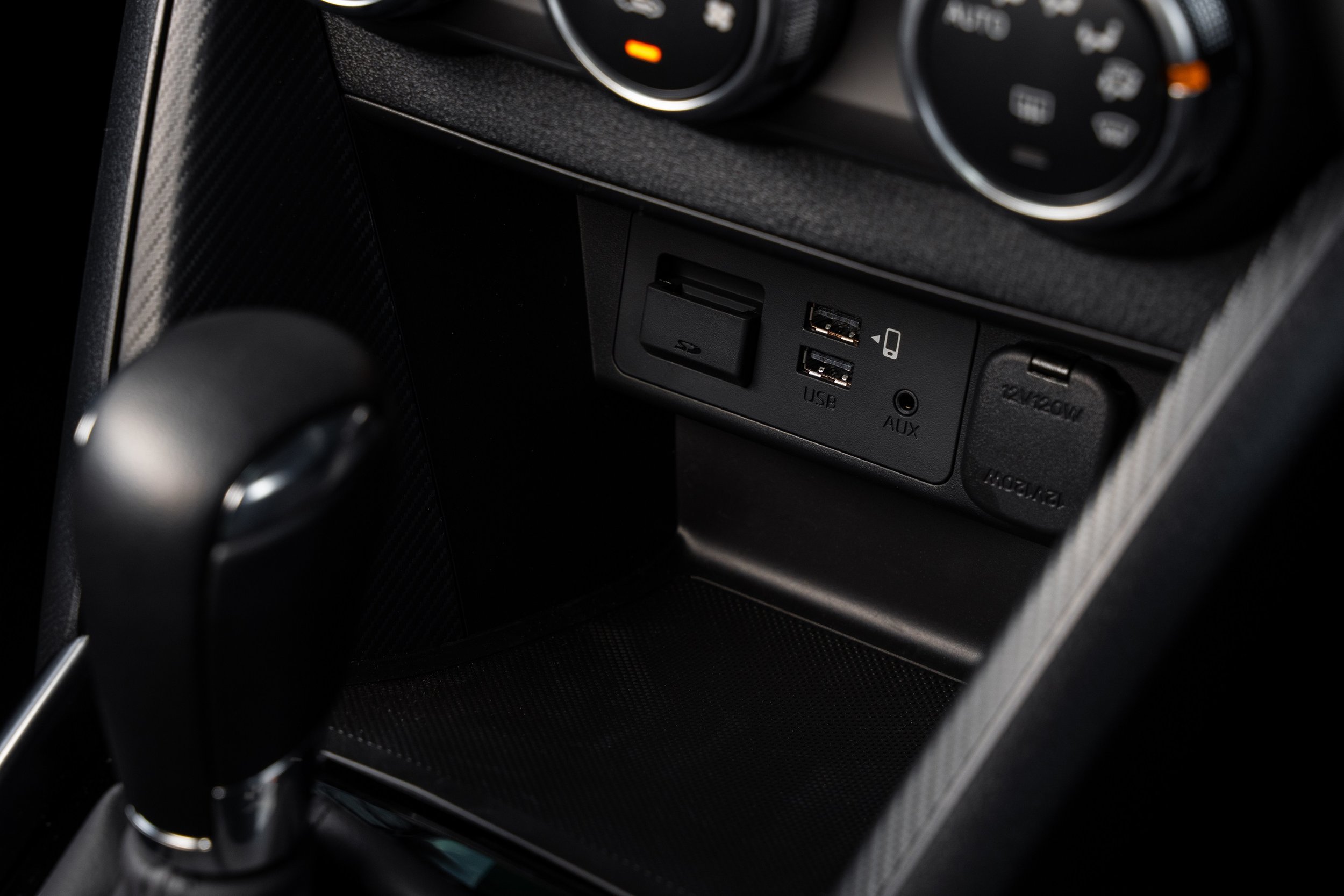

If this was a mid-size or large SUV asking 40 or 50 grand, it would be a different story where often the mid-spec version offers the best compromise (value for money), by forgoing some of the creature comforts in order to get the feature you need and keep the price digestable.
Mazda 2 does come in hatch or sedan, which is a bonus if you need a bigger boot, up from
The GT is $10 grand cheaper than the equivalent Mazda 3 GT which in essence offers some luxury inclusions the Mazda2 misses out on:
Sunroof - This is Australia, skin cancer capital of the world; saves 12kg of weight and cost.
Auto-folding, heated exterior mirrors - Wipe them with a finger if the dew gets particularly aggressive.
Bose premium audio - Loud, fat beats are only a distraction.
Heated seats + steering wheel - You’ve got climate control, that should suffice.
Adaptive LED headlights - You have LED headlights already, they just don’t swivel with the steering wheel. If visibility is particularly poor, slowing down should be top priority. Swivelling headlights aren’t going to save their neck like safe driving techniques.
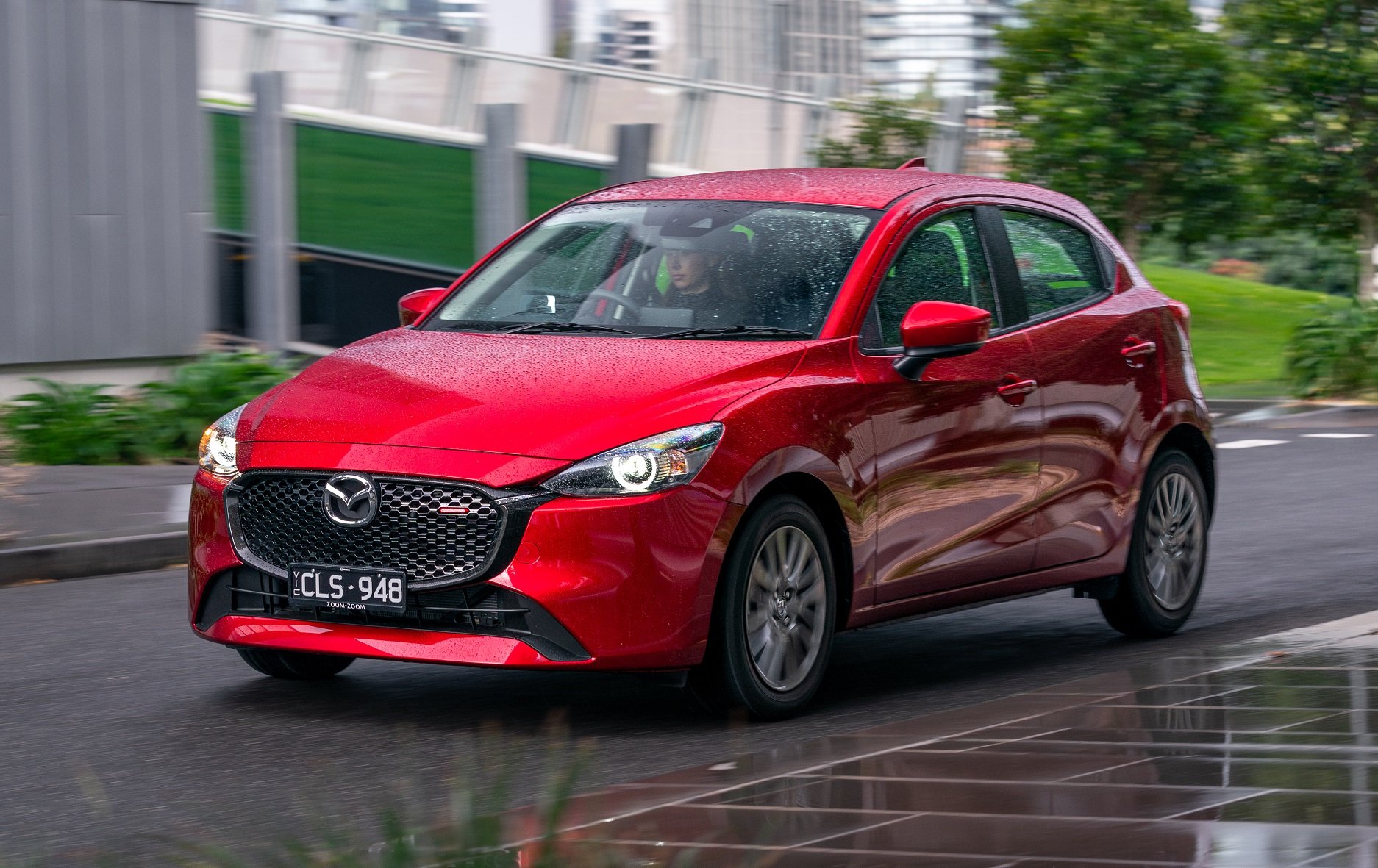
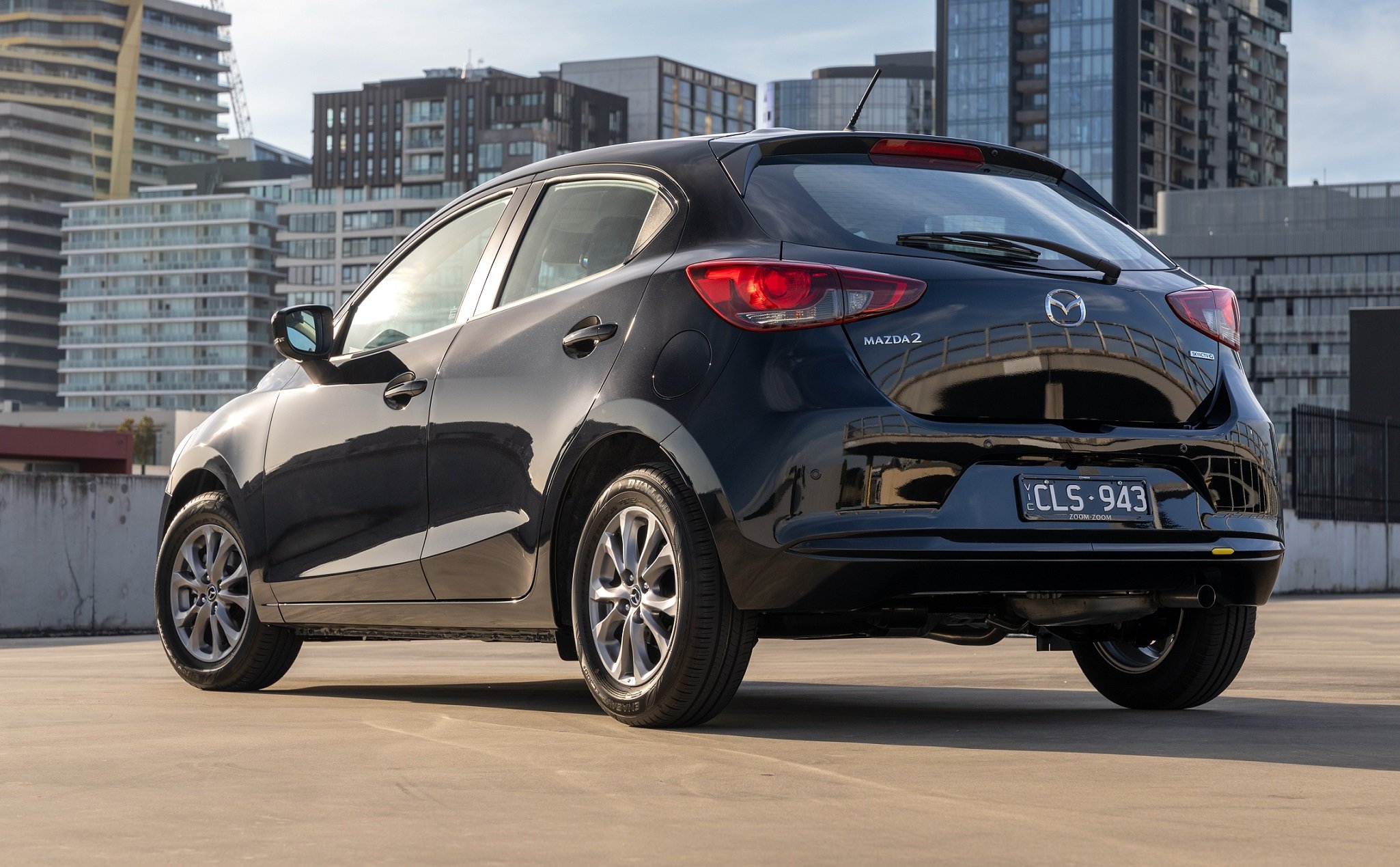

FEATURES & PRICING continued…
Pure $22,240 (manual); $24,410 (auto)
Auto emergency braking (interurban: between 4-80km/h), w pedestrian detection, forward & reverse
Lane keeping and departure warning
Blind spot monitoring
Reversing camera
Rear parking sensors & rear cross-traffic alert
6 airbags (excludes knee airbag)
Apple CarPlay and Android Auto
Cloth seats
7-inch infotainment screen
DAB+ digital radio (optional satnav)
1.5L petrol 4cyl (82kW@6000rpm / 144Nm@4000rpm)
Six-speed auto/manual
15-inch alloys + 185/65 tyres (space saver spare)
Auto LED headlights
250L boot space
6 speakers
Bluetooth
Electric park brake
Multi-function 'Commander Control' dial (it’s a love/hate thing)
Push-button engine start
Engine shutdown stop-start (another love or hate deal)
Pure SP $25,210
Adds:
Black 16-inch wheels
Black door mirrors
Black grille & roof
Shark fin antenna
Evolve $25,900 adds:
Traffic Sign Recognition (TSR)
Auto-dimming rear view mirror
16-inch alloys + 215/45 tyres (space saver spare)
1070kg kerb weight (+50kg)
Auto-folding door mirrors
Auto headlights
Rain sensing front wipers
Colour driving display
Satnav standard
GT $27,600 adds:
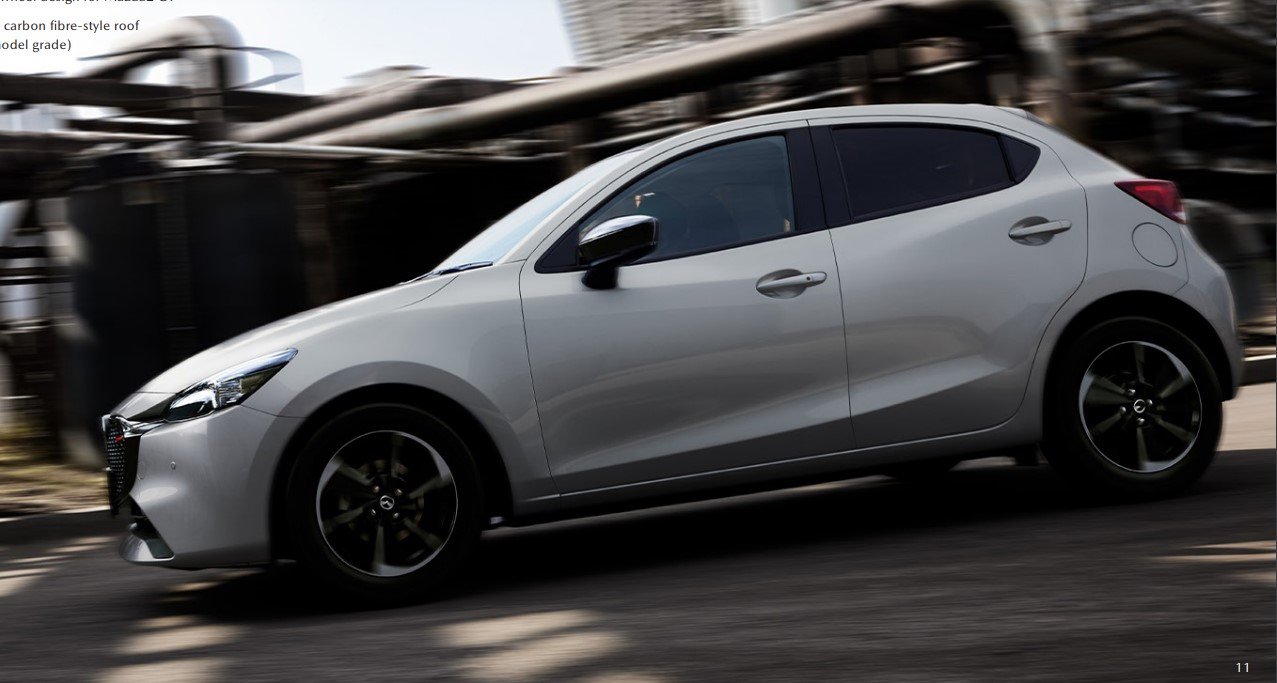
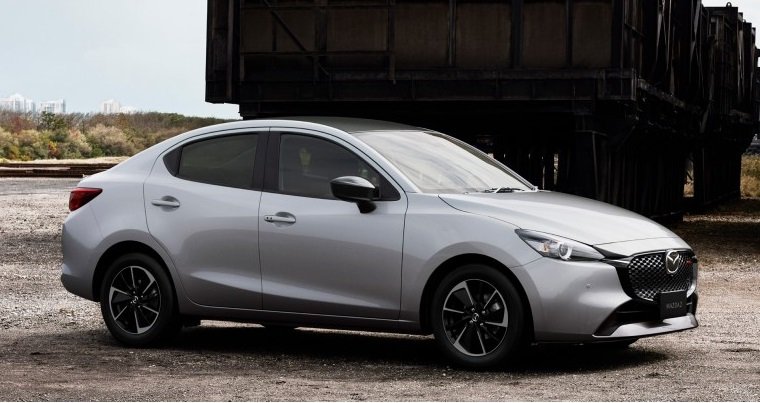
Leather seats
Proximity key
Front parking sensors
Radar/adaptive cruise control
360-degree camera
Choosing the hatch over sedan in any model grade does not incur any additional cost, so you can opt for the maximum luggage space of 440 litres over the 250L in the hatch.
.
ENGINE
The first thing to go in the last major update to Mazda 2 was the 2.0-litre SkyActiv-G engine, which was dropped, consolidating to the 1.5-litre Skyactiv-G four-cylinder petrol engine.
All that is probably meaningless to you and your kids, but it means that it has 82 kW of peak power, and a 76.4 kW/t power-to-weight ratio, and weighs just 1109kg with a full 44-litre tank or 91 RON fuel. That’s in the top-spec with the automatic transmission, which saps a few kilowatts by virtue of the torque converter, which you need when you come to a stop.
Why do you need to know this? It’s not like you’re buying a Mazda2 as an emblem for automotive high performance.
It’s about how it behaves in a dynamic driving environment. Because, chances are, you’re putting your nearest and dearest behind the wheel - your kids, your dearly beloved, siblings, grandparents, whomever. And small cars can be perceived as some seemly unsafe, underpowered box of boring.
But what’s highly appealing is the base model ‘Pure’, because it offers you the chance to teach your kids to drive a manual transmission in a car that is unequivocally not a stripped out poverty pack. You get the same engine, but because the whole vehicle weighs less than 1100kg, the power-weight ratio is better than the auto, giving it 79kW per tonne.
That also makes it pretty good value in terms of its performance against slightly bigger but much faster performance cars. Not that Mazda 2 is anything close to a performance car, the point is that you get good-enough performance for a substantially better price.
Being light, the Pure drives really nicely, and both the clutch and 6-speed manual are very smooth. Mazda has actually given this driveline some refinement which is not how most base model poverty pack manuals get in this day and age.
You should also consider performance in a small car because you want a sufficient amount of straight line acceleration for situations like pulling out from blind T-intersections or overtaking on freeway and rural B-roads. Places where it’s easy to make mistakes or where others might be careless. The terms “cheap” and “gutless” comes to mind, not to be derogatory, but that’s often the perception of these small cars. But this is one of the best little hatches in the market.
We’ll get to Mazda2 safety shortly, but for the moment, this ‘micro car’, as the industry calls it, is noticeably lighter than its direct rivals like Kia Stonic or Hyundai Venue (although both considered an SUV), and the Audi A1. It’s only a few kegs heavier than the Toyota Yaris as well. Weight affects handling, braking, cornering and in an emergency situation, less is more.
Conclusion
The Mazda 2 at sub-30 grand is a strong value offering.
But it’s rivalled by some equally high quality cars like the Hyundai Venue, Kia Rio and the incoming Toyota Yaris. And there are also some serious considerations to be made with the slightly larger, but still small nonetheless, Hyundai i30, Kia Cerato, Toyota Corolla and Mazda 3 - the Mazda2’s marginally bigger brother.
You will pay well into the mid- to high-30-grand for the latter bunch. You’ll also be getting a substantially better car than the micro class, which is why I typically recommend to spend a bit more if you can, because the value increases.
If the budget is strict however, the Mazda 2 is a convincing option against its peers. You get the essential safety gear for 2020 onward. But without the extra slab of luxury in models above it, but enough cabin space for humans thanks to a decent wheelbase, and the right level of essential tech to satisfy the youth of today. Looks good too, for what that’s worth.
But you get a nice-handling, safe little car which has an engine and transmission that offer an engaging driving experience, with enough grunt to get going in those tricky traffic situations. The ones where you want your kids to get through unscathed.




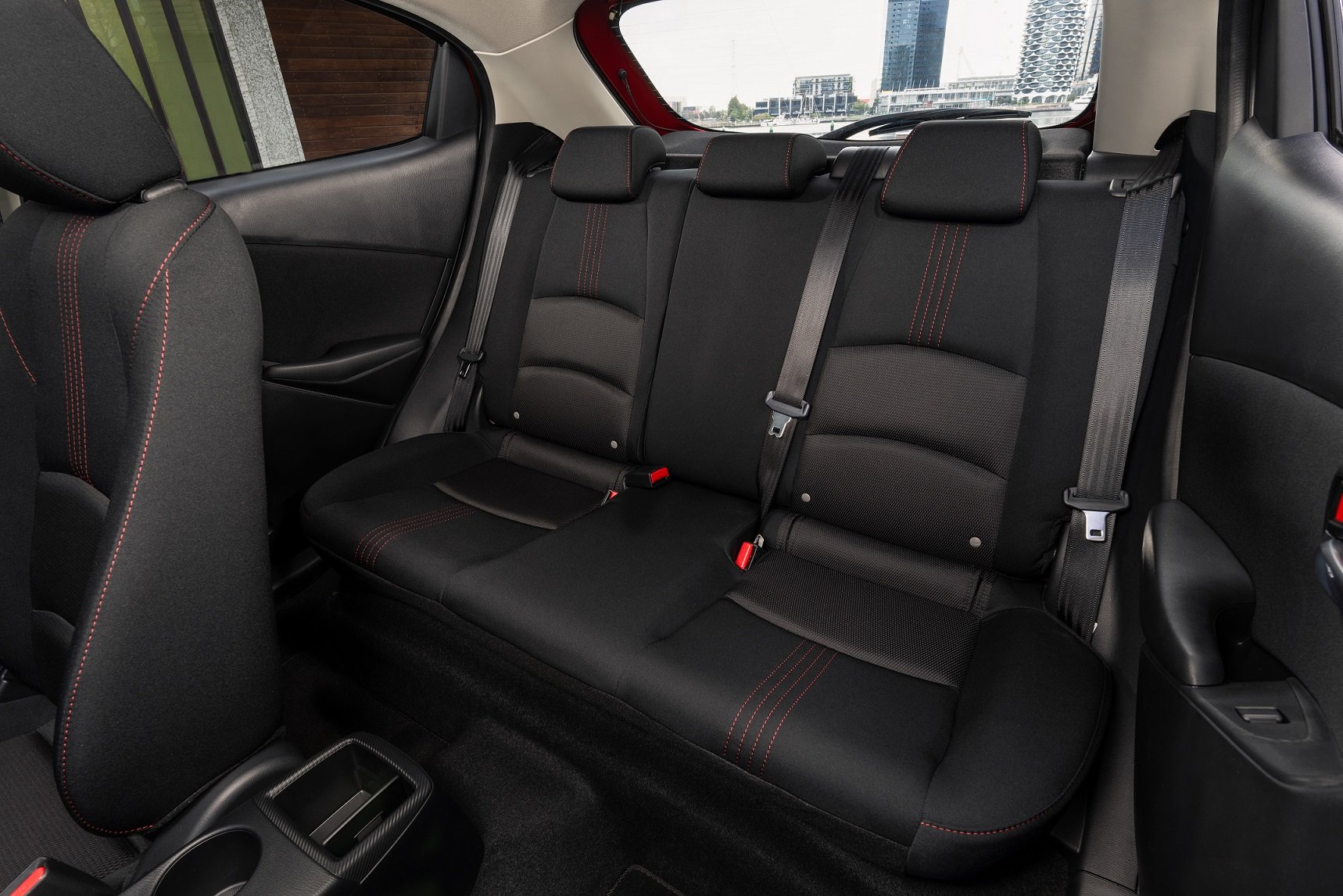


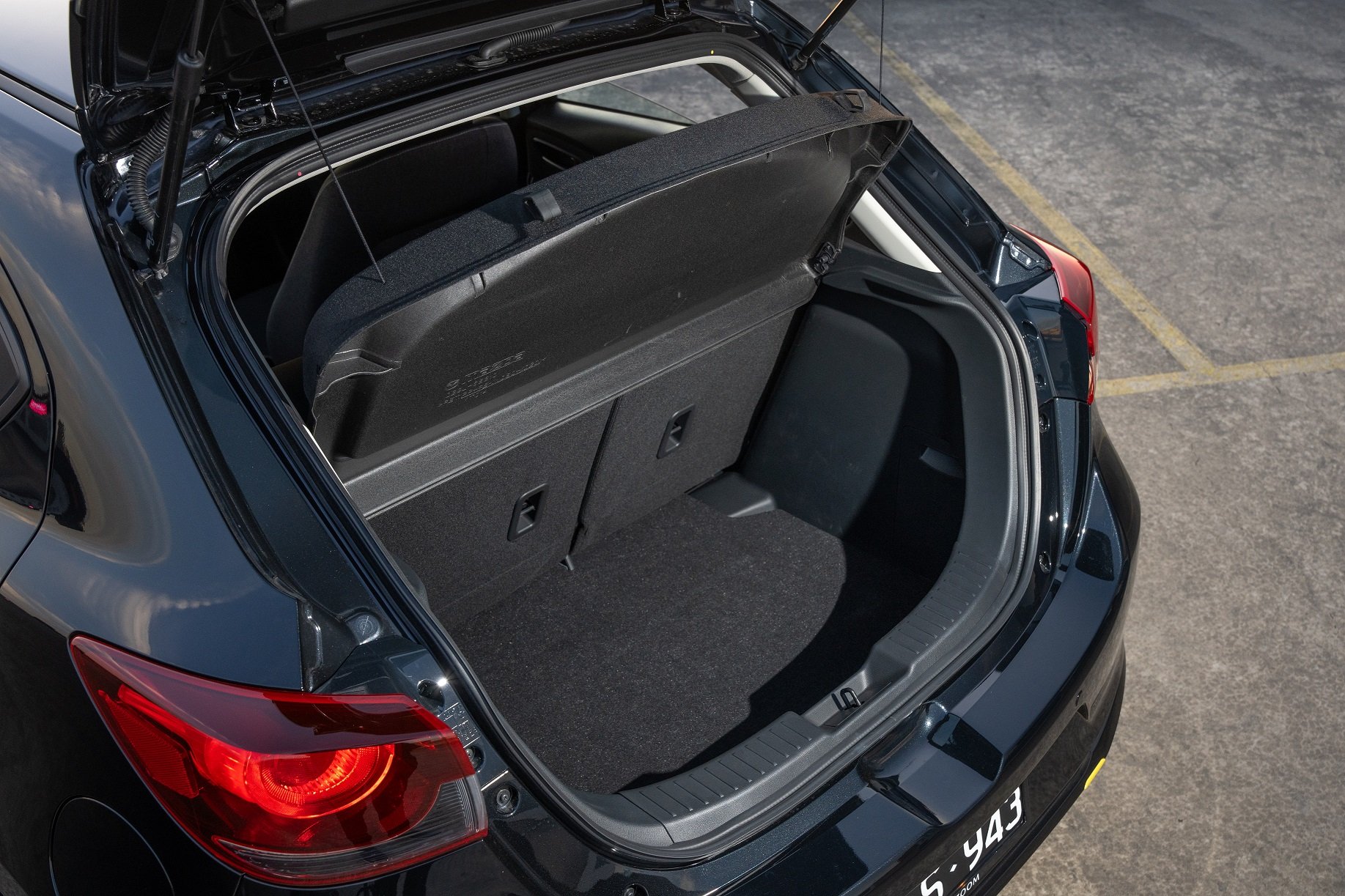







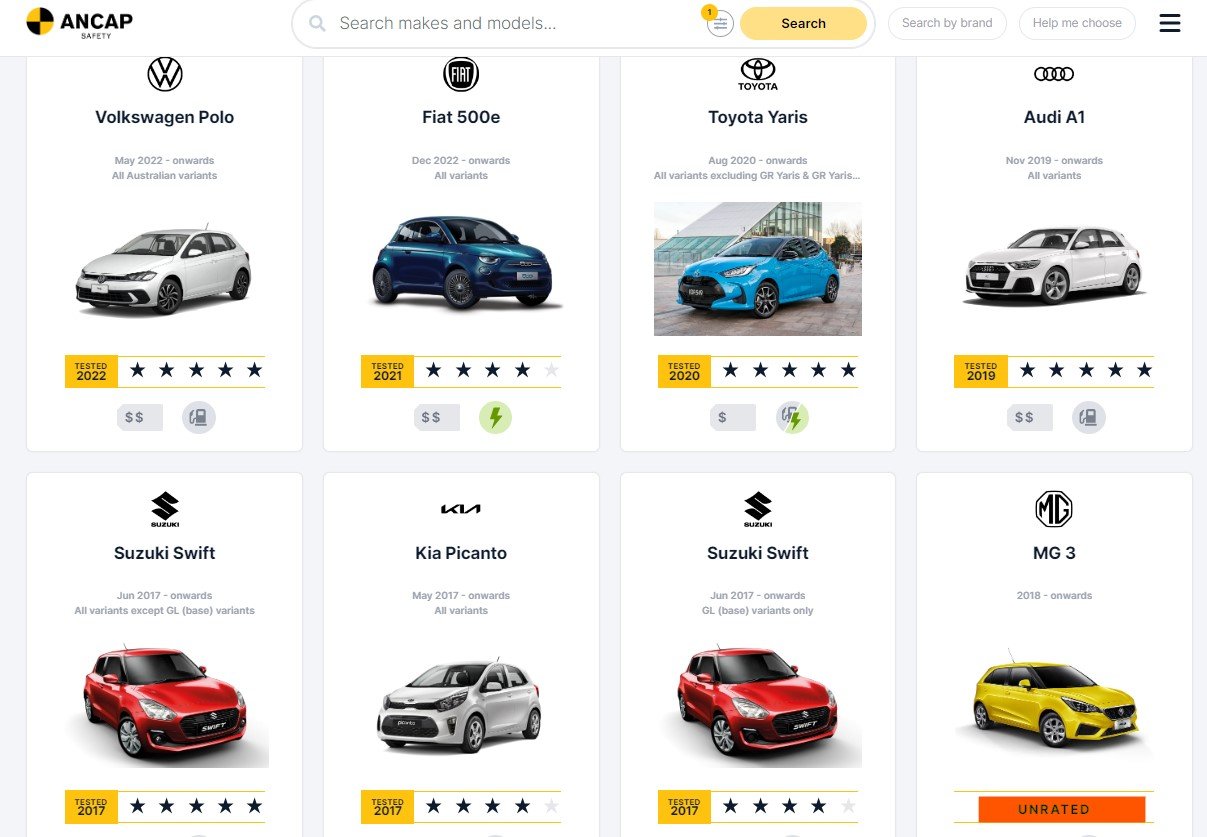






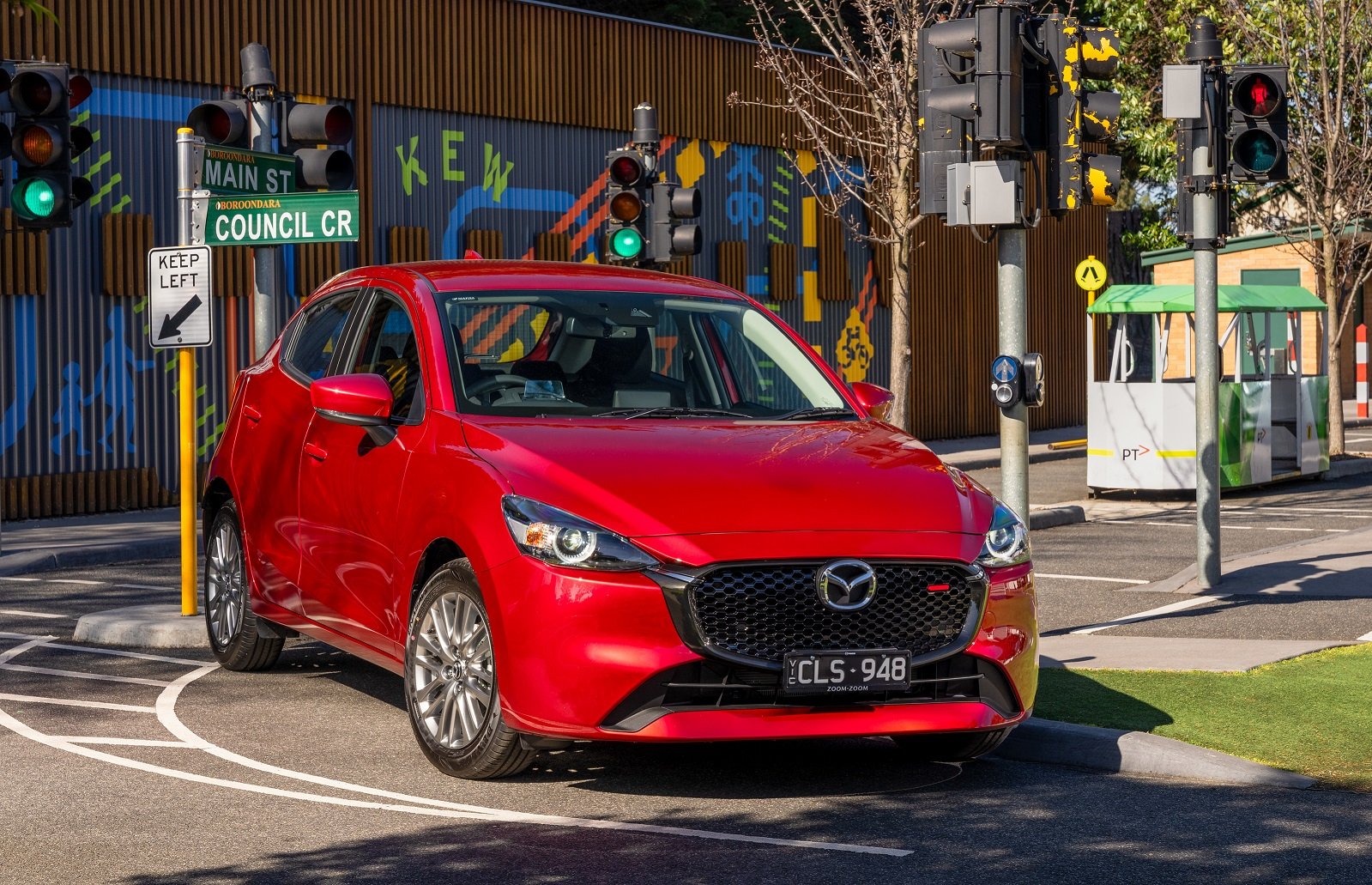

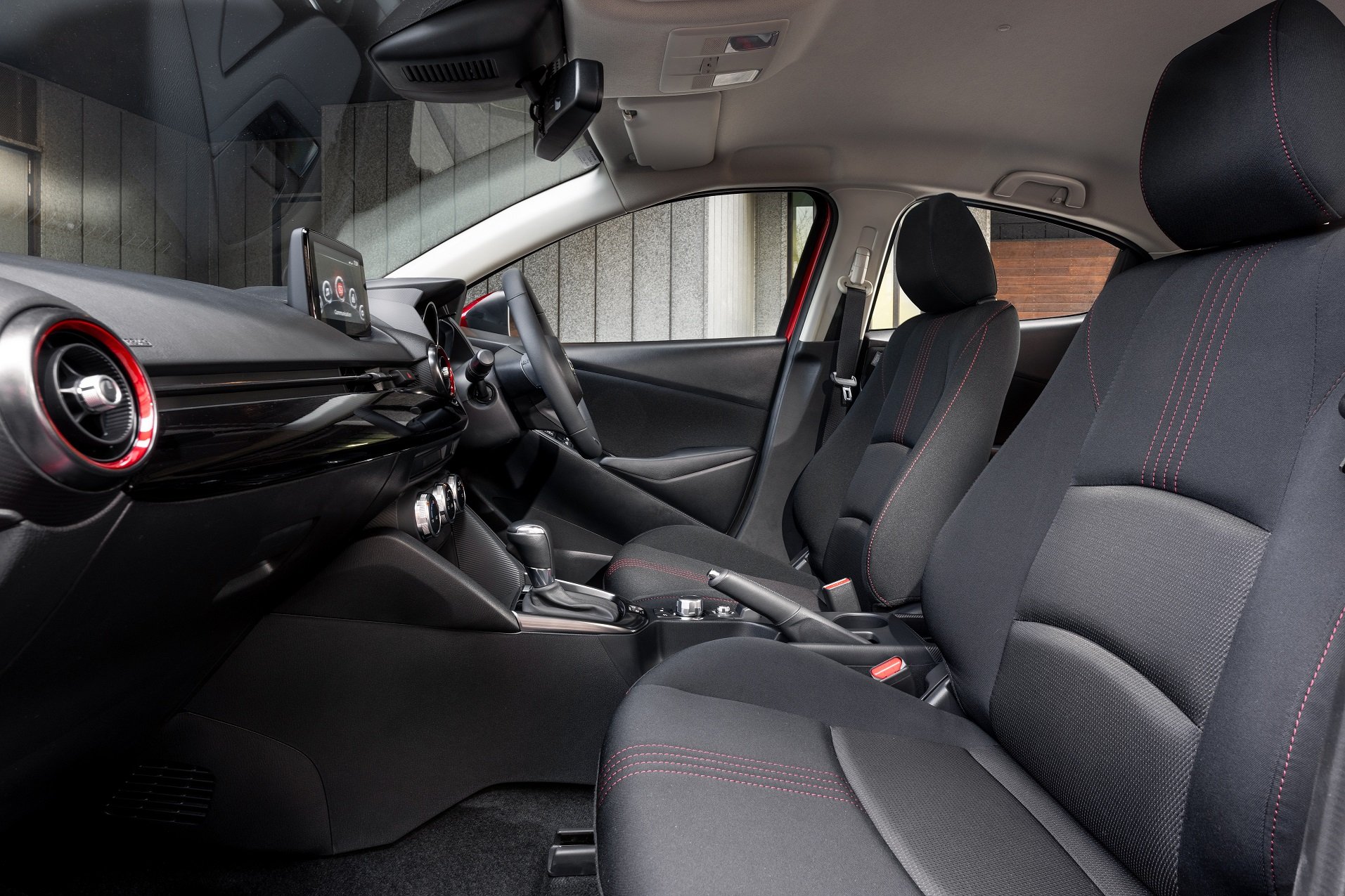
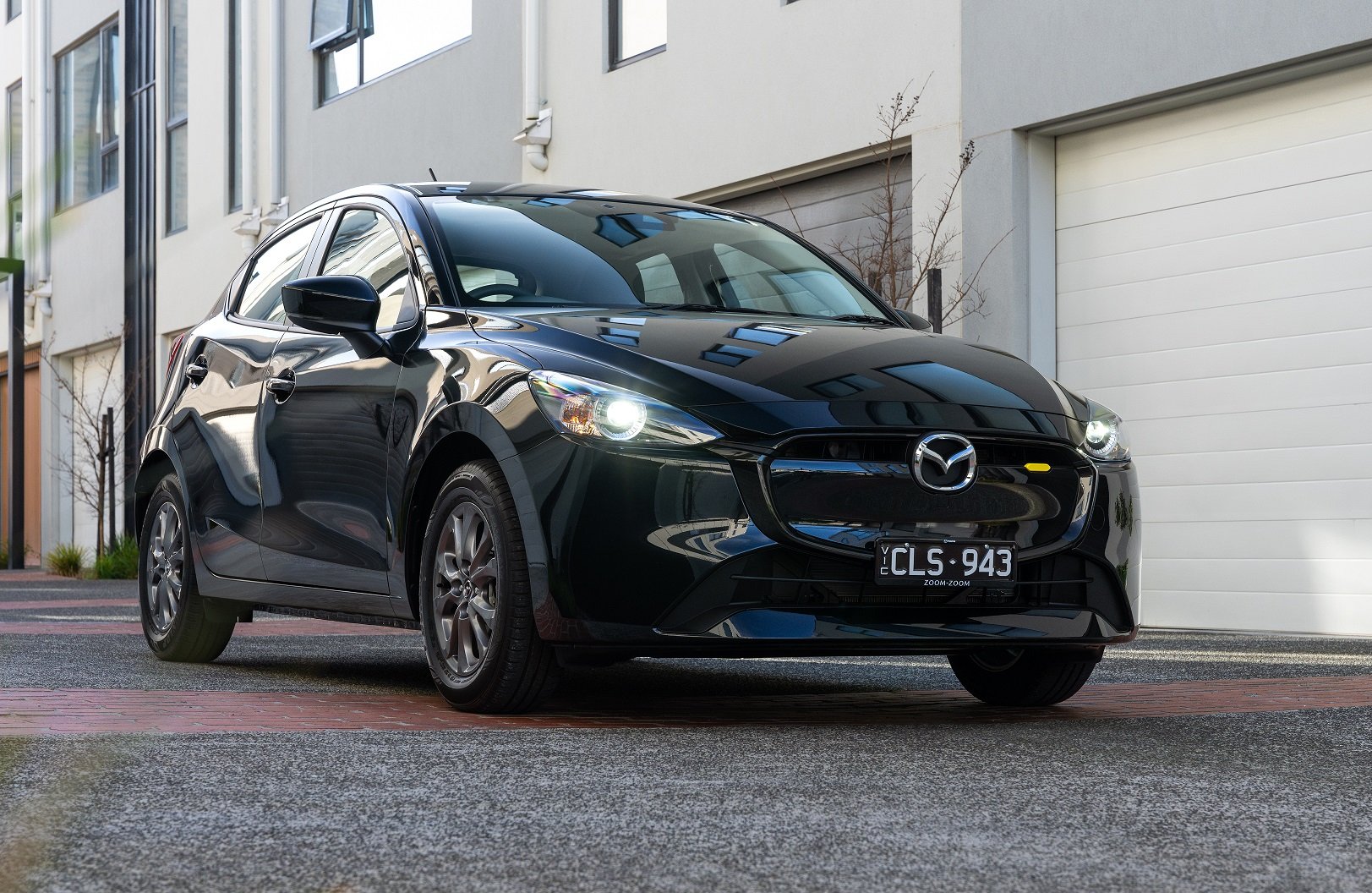
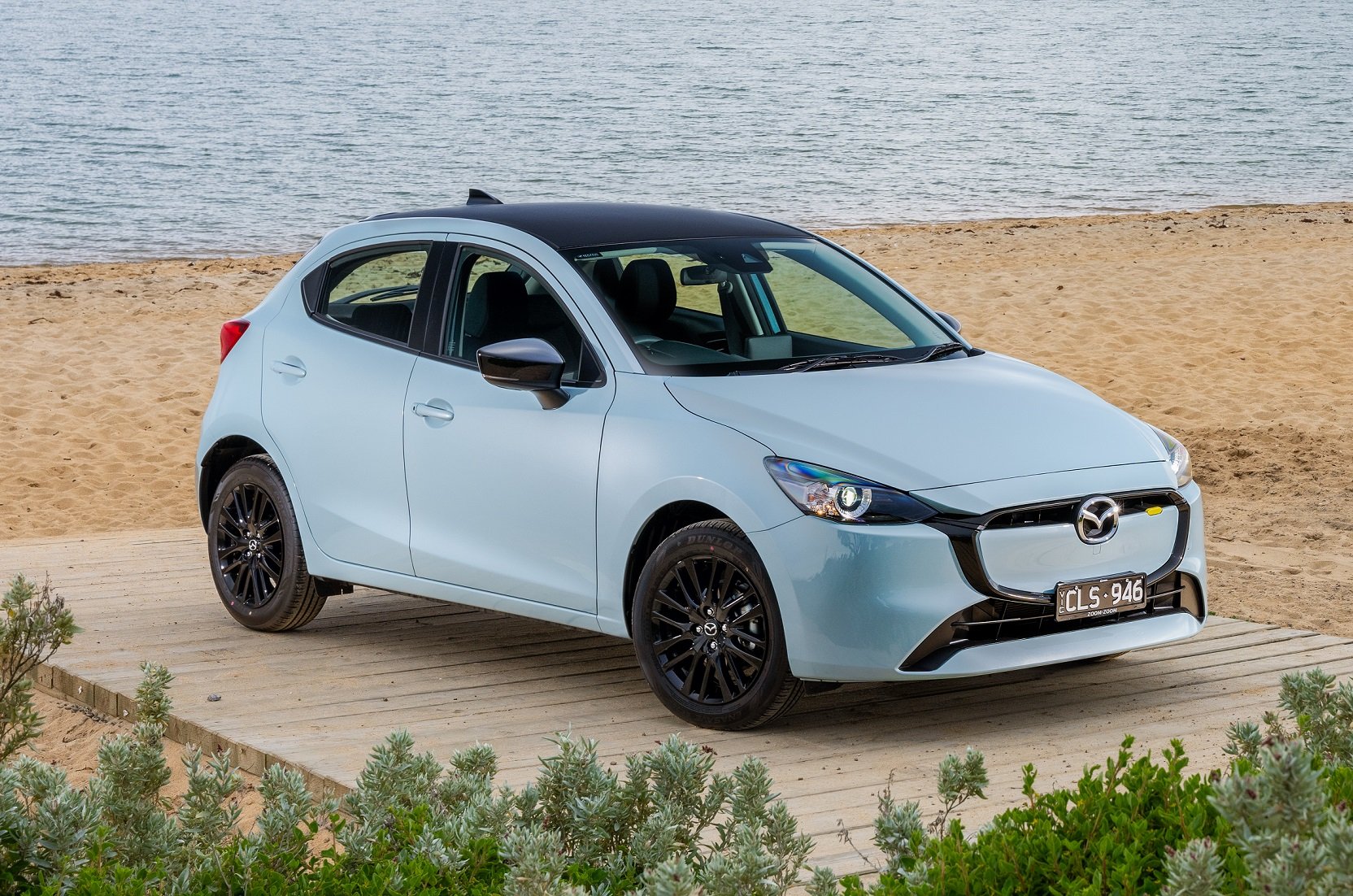
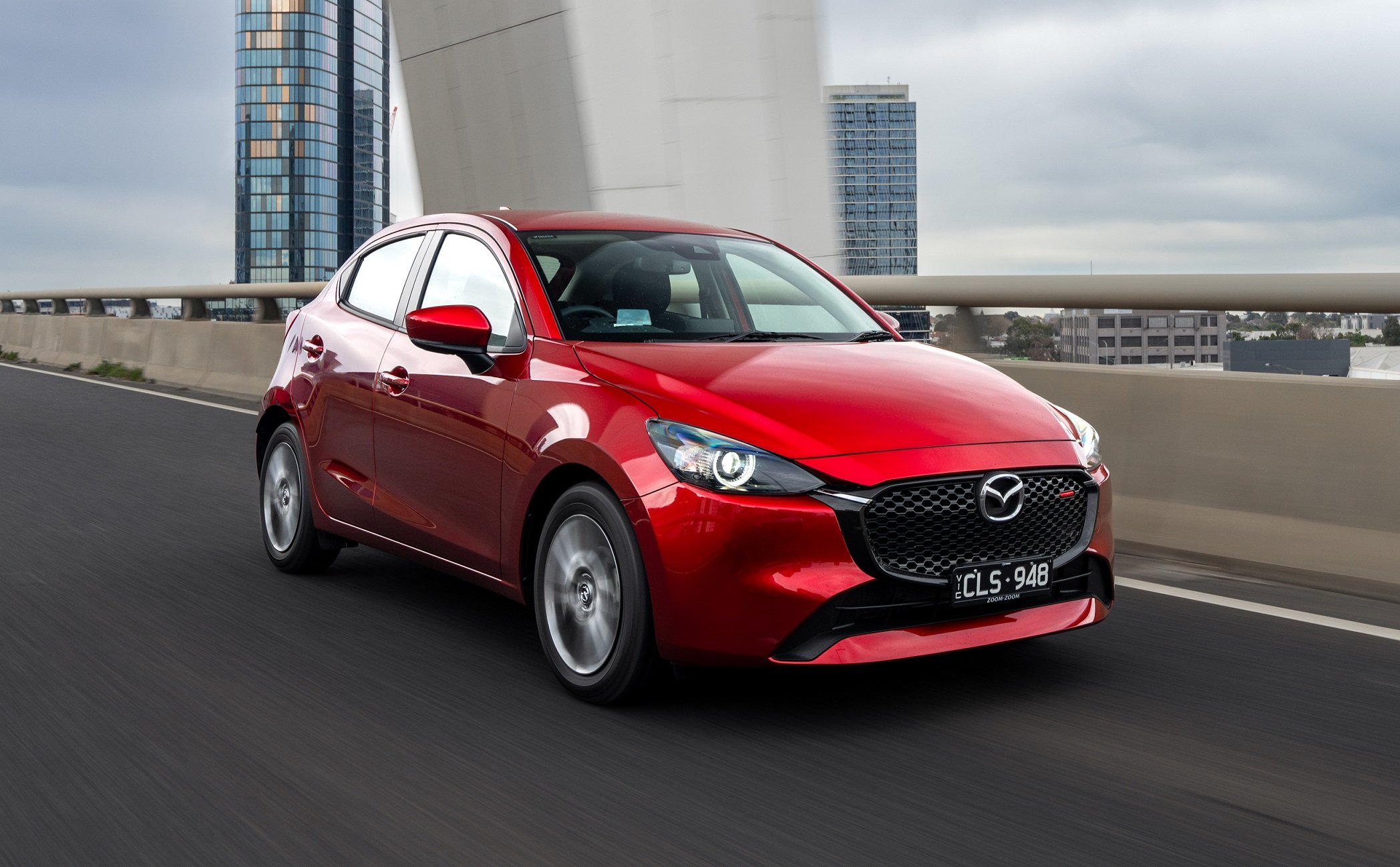





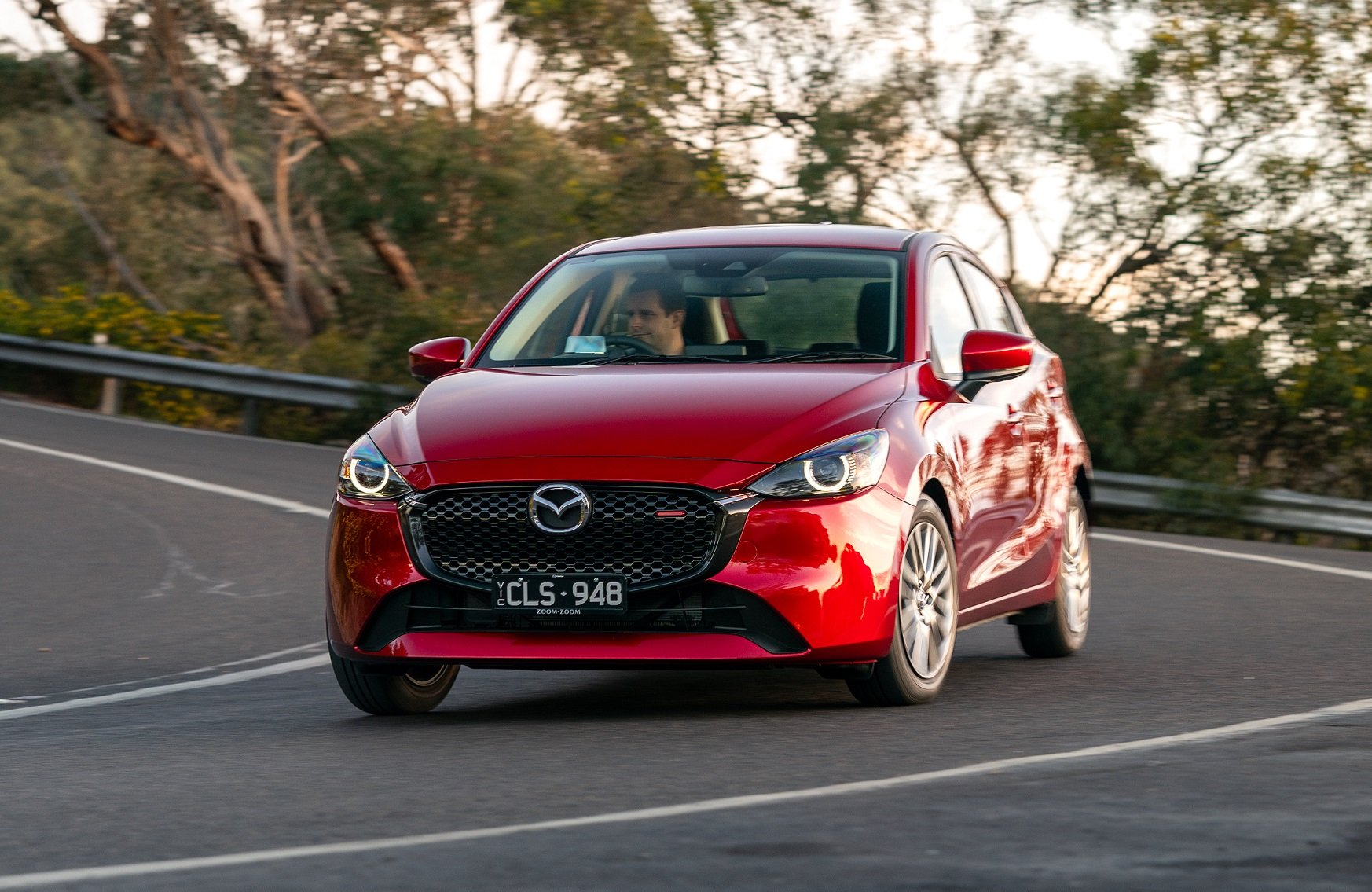





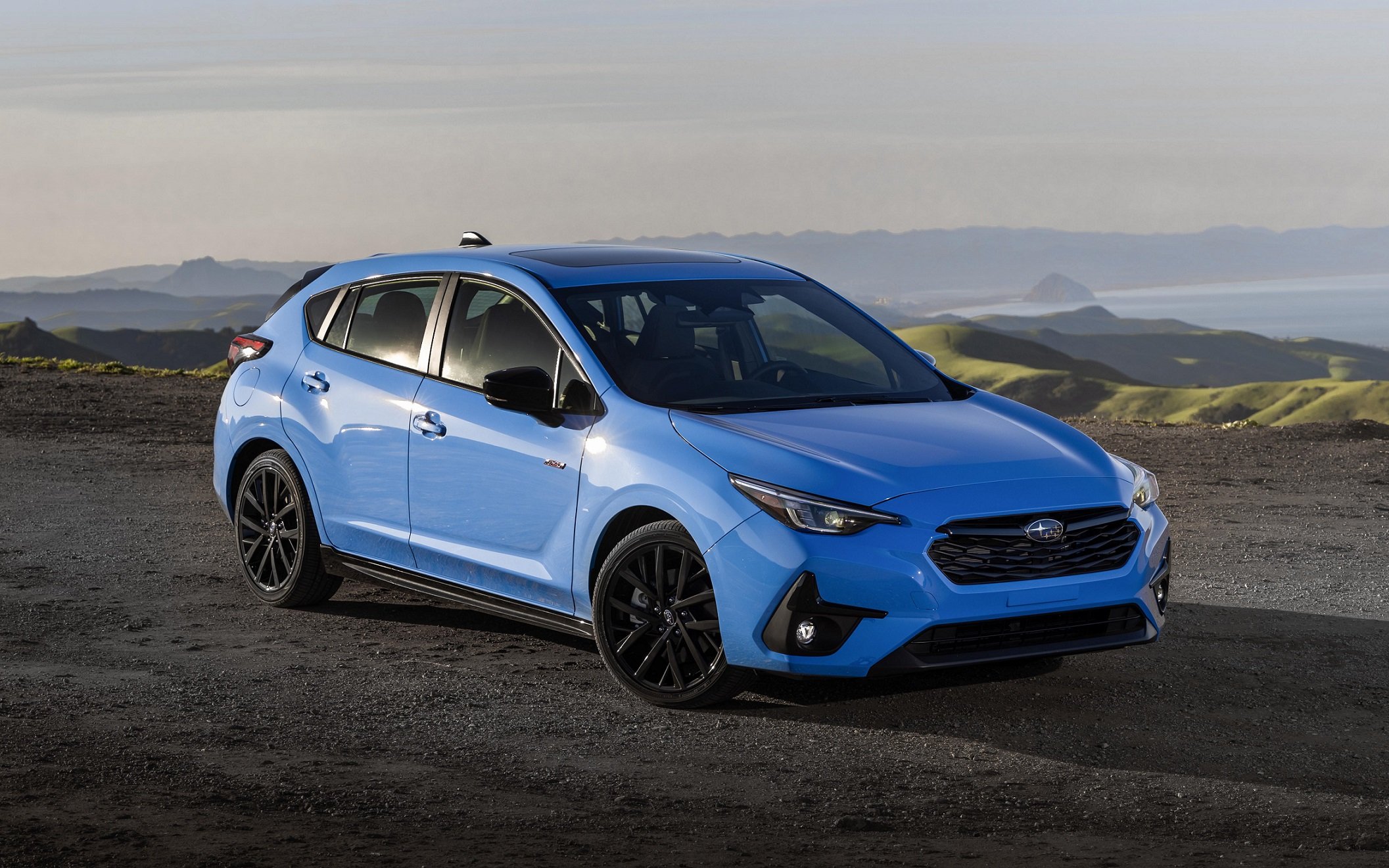
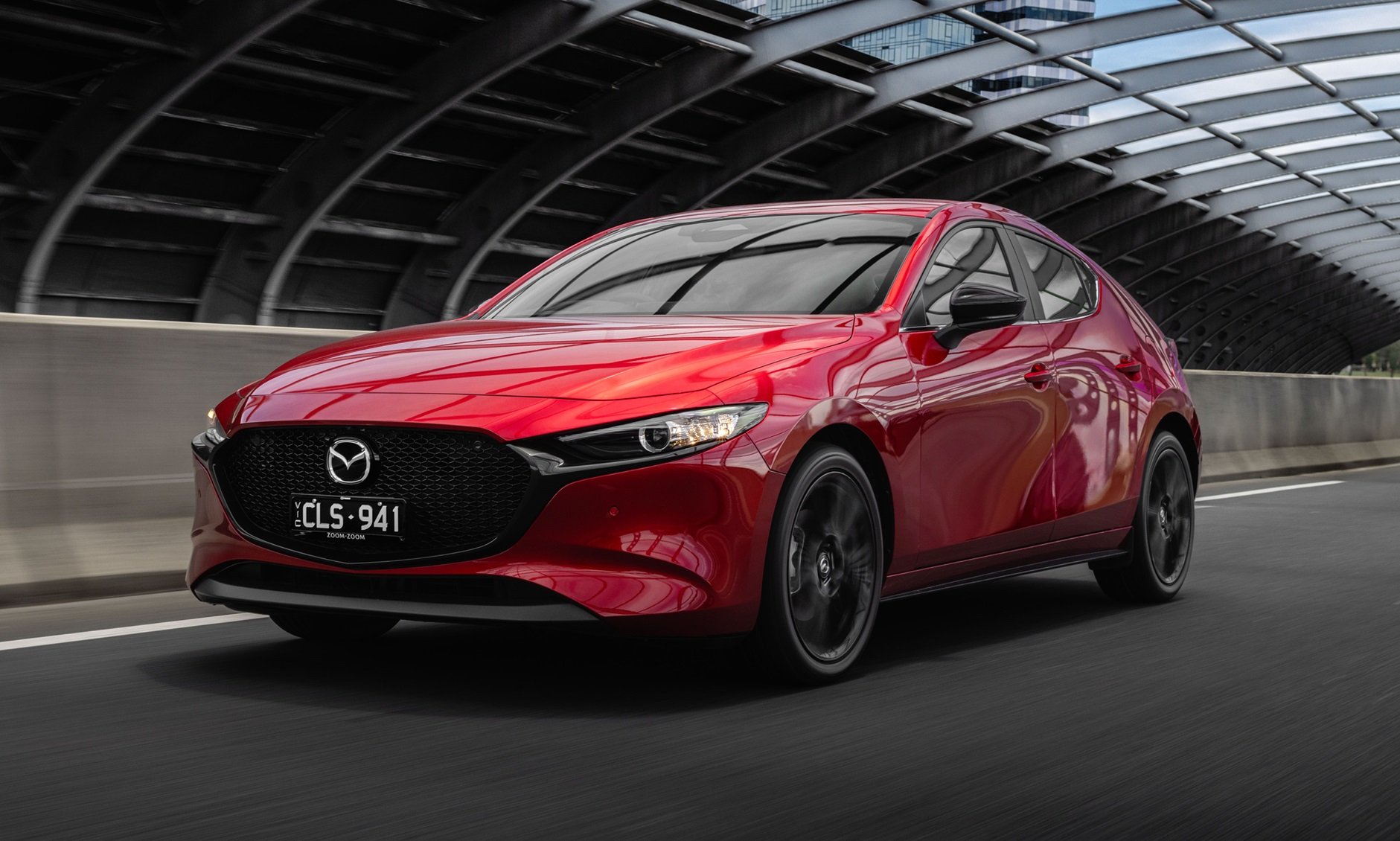


If family is forcing you to shop for an SUV because it’s fashionable, the fast family performance sedan icon, now has a big boot. Long live the wagon - to hell with the status quo. Here’s what you need to know…